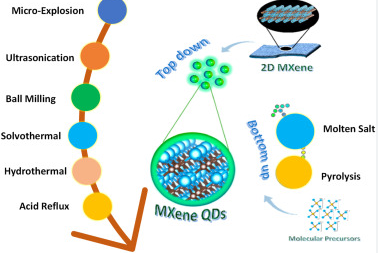In the realm of healthcare, early and accurate diagnosis is paramount for effective treatment and patient outcomes. Traditional diagnostic techniques often rely on cumbersome and time-consuming processes, leading to delays in diagnosis and treatment initiation. However, the emergence of quantum sensing technologies is poised to revolutionize medical diagnosis by offering faster, more sensitive, and non-invasive diagnostic tools. In this article, we explore the groundbreaking innovations in quantum sensing for medical diagnosis, examining their potential applications, challenges, and implications for the future of healthcare.
Quantum Sensing: A New Frontier in Medical Diagnosis
Quantum sensing harnesses the principles of quantum mechanics to detect and measure physical properties with unprecedented precision and sensitivity. By leveraging the unique properties of quantum systems, such as superposition and entanglement, quantum sensors can detect subtle changes in magnetic fields, electromagnetic radiation, and chemical compositions that are indicative of disease states and physiological abnormalities.
In the context of medical diagnosis, quantum sensing technologies offer a range of potential applications, from early detection of cancer biomarkers and infectious pathogens to real-time monitoring of physiological parameters and drug interactions. By enabling faster, more accurate, and non-invasive diagnostic tests, quantum sensors have the potential to revolutionize healthcare delivery and improve patient outcomes across a wide range of medical specialties.
Quantum Magnetic Resonance Imaging (MRI)
Magnetic resonance imaging (MRI) is a widely used medical imaging technique that provides detailed images of internal structures and organs in the body. Quantum sensing technologies, such as diamond-based quantum sensors and atomic magnetometers, offer significant enhancements to traditional MRI methods by enabling higher spatial resolution, faster imaging speeds, and improved sensitivity to subtle changes in tissue microstructure.
Diamond-based quantum sensors, for example, leverage the unique properties of diamond defects, such as nitrogen-vacancy (NV) centers, to detect magnetic fields with single-spin sensitivity. These sensors enable MRI scans with higher contrast and resolution, allowing clinicians to visualize anatomical structures with greater clarity and accuracy. Moreover, quantum-enhanced MRI techniques promise to reduce scan times and enhance patient comfort by minimizing exposure to strong magnetic fields.
Quantum Dot-Based Biosensors
Biosensors play a crucial role in medical diagnosis by detecting biomolecules and disease markers in biological samples, such as blood, saliva, and urine. Quantum dot-based biosensors offer a revolutionary approach to biosensing by leveraging the unique optical and electronic properties of quantum dots to detect and quantify biomolecular interactions with high sensitivity and specificity.
Quantum dots are semiconductor nanoparticles that emit fluorescent signals in response to external stimuli, such as the presence of specific biomolecules or changes in pH levels. By functionalizing quantum dots with biomolecular receptors, such as antibodies or DNA probes, researchers can design highly selective and sensitive biosensors for detecting disease biomarkers, pathogens, and genetic mutations in clinical samples.
Quantum Cascade Lasers for Spectroscopy
Spectroscopic techniques, such as infrared spectroscopy and Raman spectroscopy, are powerful tools for analyzing the chemical composition of biological samples and detecting molecular signatures of disease. Quantum cascade lasers (QCLs) are semiconductor lasers that emit tunable infrared light with high spectral resolution, making them ideal sources for spectroscopic applications in medical diagnosis.
QCL-based spectroscopy enables non-invasive and real-time analysis of biological samples, such as blood, tissue, and breath, for biomarkers associated with various diseases, including cancer, diabetes, and infectious diseases. Moreover, the portability and miniaturization of QCL-based spectroscopic systems offer opportunities for point-of-care diagnostics and remote monitoring of patient health in resource-limited settings.
Challenges and Considerations
While quantum sensing technologies hold immense promise for medical diagnosis, several challenges and considerations must be addressed to realize their full potential in clinical practice. One of the primary challenges is the translation of laboratory-based research into clinically viable diagnostic tools that meet regulatory standards for safety, efficacy, and reliability.
Moreover, the integration of quantum sensing technologies into existing healthcare infrastructure requires investment in infrastructure, training, and validation studies to ensure seamless integration and interoperability with existing diagnostic workflows. Additionally, ethical considerations, such as patient privacy, data security, and informed consent, must be carefully addressed to uphold patient rights and confidentiality in the context of quantum-enhanced diagnostics.
Future Directions and Opportunities
Despite the challenges, the future of quantum sensing in medical diagnosis is bright, with ongoing research and development efforts poised to unlock new opportunities and capabilities. Advances in quantum materials, nanotechnology, and signal processing techniques are expanding the capabilities of quantum sensors, enabling higher sensitivity, faster response times, and multiplexed detection of multiple biomarkers in complex clinical samples.
Furthermore, interdisciplinary collaborations between physicists, engineers, chemists, and clinicians are essential for driving innovation and translating quantum sensing technologies into clinically impactful diagnostic tools. By fostering partnerships between academia, industry, and healthcare providers, researchers can accelerate the development and commercialization of quantum-enhanced diagnostic solutions that address unmet clinical needs and improve patient care.
Conclusion: Pioneering a Quantum Future in Healthcare
In conclusion, the integration of quantum sensing technologies into medical diagnosis represents a transformative leap forward in healthcare. By harnessing the power of quantum mechanics, researchers and clinicians can develop faster, more sensitive, and non-invasive diagnostic tools that enable early detection, personalized treatment, and improved patient outcomes across a wide range of medical conditions.
As we continue to explore the frontiers of quantum sensing in healthcare, let us embrace the collaborative spirit of innovation and discovery to unlock new possibilities for improving human health and well-being. By pushing the boundaries of scientific knowledge and technological innovation, we can pioneer a quantum future in healthcare that revolutionizes medical diagnosis and transforms the practice of medicine for generations to come.
